Design for Living Blu-ray Movie
HomeDesign for Living Blu-ray Movie 
Criterion | 1933 | 92 min | Not rated | Dec 06, 2011Movie rating
7.6 | / 10 |
Blu-ray rating
| Users | 4.5 | |
| Reviewer | 4.0 | |
| Overall | 4.0 |
Overview
Design for Living (1933)
A playwright and an artist both fall in love with an American living in Paris. The girl can't make up her mind between the two men, however, so the threesome decide to move in together.
Starring: Fredric March, Gary Cooper, Miriam Hopkins, Edward Everett Horton, Franklin PangbornDirector: Ernst Lubitsch
| Romance | Uncertain |
| Comedy | Uncertain |
Specifications
Video
Video codec: MPEG-4 AVC
Video resolution: 1080p
Aspect ratio: 1.33:1
Original aspect ratio: 1.37:1
Audio
English: LPCM Mono
Subtitles
English SDH
Discs
50GB Blu-ray Disc
Single disc (1 BD)
Playback
Region A (locked)
Review
Rating summary
| Movie | 4.5 | |
| Video | 3.5 | |
| Audio | 3.5 | |
| Extras | 4.0 | |
| Overall | 4.0 |
Design for Living Blu-ray Movie Review
Reviewed by Dr. Svet Atanasov November 29, 2011Ernst Lubitsch's "Design for Living" (1933) arrives on Blu-ray courtesy of Criterion. The supplemental features on the disc include selected-scene commentary by film professor William Paul; short segment of the 1932 omnibus film "If I Had a Million", starring Charles Laughton and directed by Ernst Lubitsch; exclusive new video interview film scholar and screenwriter Joseph McBride; and a 1964 British television production of the original play "Design for Living", introduced by Noel Coward. The disc also arrives with an illustrated booklet featuring an essay by film critic Kim Morgan. In English and French, with optional English SDH subtitles for the main feature. Region-A "locked".
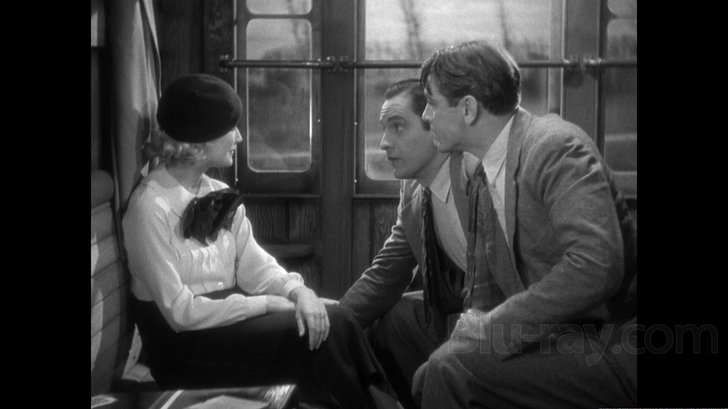
Strangers on a train
On a train from Marseilles to Paris, Gilda (Miriam Hopkins, The Heiress, Carrie), a beautiful and energetic designer, meets two young, handsome and unsuccessful gentlemen - George (Gary Cooper, A Farewell to Arms, High Noon), a painter, and Tom (Frederic March, A Star is Born, The Best Years of Our Lives), a playwright. They begin a conversation. By the end of their trip, George and Tom fall madly in love with Gilda. Before they part ways, the three arrange to meet again.
Meanwhile, Max Plunkett (Edward Everett Horton, The Great Garrick, The Town Went Wild), Gilda’s slightly older and stuffy boss, attempts to clarify his feelings and romantic intentions but quickly gets scolded by the feisty girl. Shortly after, she proceeds to sleep with George and Tom to decide which of the two is worth keeping.
But the boys turn out to be so good that Gilda can’t make up her mind, which is why she offers to become their "mother of the arts" - she would help them become the successful artists they always aspired to be while enjoying their company. A "gentleman’s agreement" which throws sex out of the relationship is also accepted by the three friends.
Soon after, a famous impresario (Franklin Pangborn, Sullivan's Travels) expresses interest in one of Tom’s plays and he is invited to relocate to London to oversee its upcoming production. Gilda then moves in with George and he quickly becomes a successful artist. When the news reaches London, Tom gets very upset and immediately heads back to Paris. With George away on business, Gilda and Tom agree that this is the right time to ignore the "gentleman’s agreement". On the following morning, however, George surprises the love birds and Tom promptly gets punched in the face. The incident forces Gilda to pack her bags and head back to Utica, New York, where Max immediately proposes to her. Eventually, having spent some time in China, George and Tom decide to visit Gilda and see whether she has found happiness.
Based on Noel Coward’s famous play and a screenplay by the great Ben Hecht, Ernst Lubitsch’s Design for Living is a light, energetic and witty farcial comedy that is neither too European nor too American. It is elegant and glossy where it needs to be but also surprisingly sexy, quirky, and at times even strangely provocative.
The provocative sexual interchanges heard throughout the film are brilliantly scripted. The intentions behind them are made perfectly clear but are never spelled out. Hecht’s script is also filled with a good dose of light cynicism that counters very well the occasional melodramatic overtones.
The identities of the main characters are not as well defined as they are in Coward’s play - Max’s gayness, in particular, is drastically toned down, as is George and Tom’s relationship - which makes the finale slightly less edgy. However, the message of the film, which is that people should be free to love and live their lives as they wish, is identical to the one from the play.
Cooper and March are a lot of fun to watch, especially when they get angry and try to hurt each other. During the final third of the film, Horton is also very entertaining as the pretentious and disturbingly ambitious businessman who is far more interested in one of his wealthy clients than he is in his new wife. The film, however, belongs to the energetic and charming Hopkins, who truly shines under Lubitsch’s masterful direction.
Note: Hecht, arguably one of Hollywood’s greatest screenwriters, who managed to rewrite the script for Gone With the Wind in five days, and director Lubitsch retained only a single line from Coward’s play: "For the good of our immortal souls!"
Design for Living Blu-ray Movie, Video Quality 
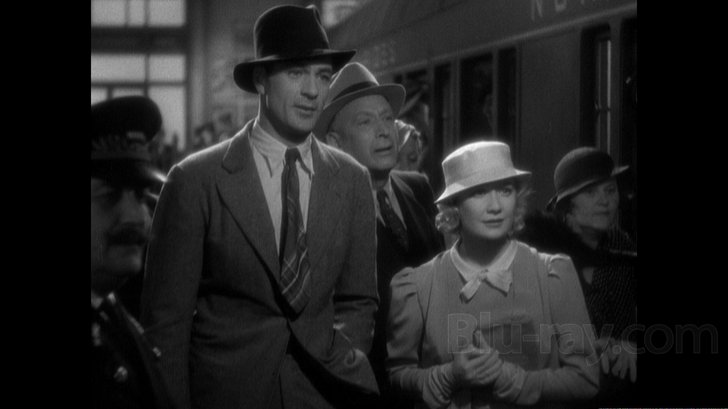
Presented in an aspect ratio of 1.33:1, encoded with MPEG-4 AVC and granted a 1080p transfer, Ernst Lubitsch's Design for Living arrives on Blu-ray courtesy of Criterion.
The following text appears inside the booklet provided with this Blu-ray disc:
"This new high-definition digital transfer was created on a Spirit 1K Datacine from a 35mm fine-grain master positive. Thousands of instances of dirt, debris, scratches, splices, warps, jitter, and flicker were manually removed using MTI's DRS and Pixel Farm's PFClean, while Image Systems' DVNR was used for small dirt, grain, and noise reduction. Image Mill's Steady was also used to reduce film weave.
Telecine supervisor: Maria Palazzola.
Telecine colorist: Gregg Garvin/Modern Videofilm, Los Angeles."
I think it is fair to say that time has not been kind to this classic Hollywood film. I think it is also fair to say that there wasn't a whole lot Criterion could do to have the film look better than it does. Clearly, there are a number of limitations with the existing master which the company had to work with.
Some close-ups look quite pleasing (see screencapture #19), but elsewhere the image is rather soft and textures are problematic (see screencapture #6). Clarity, however, is mostly adequate, and, with a few minor exceptions, contrast levels stable. Some extremely light grain has been retained, but some of it is quite inconsistent and some also mixed up with light noise (see screencapture #5). The good news is that there are no traces of serious post-production sharpening. Unsurprisingly, the film does have a pleasing organic look. It is often a weak organic look but nevertheless certainly a preferable one. Finally, some small damage marks and tiny horizontal lines are occasionally present, but I assume that they could not have been removed without dramatically affecting the integrity of the image. All in all, considering Criterion's strong record and dedication to high quality presentations, I think it is fair to speculate that this is likely the best Design for Living could look at the moment. (Note: This is a Region-A "locked" Blu-ray disc. Therefore, you must have a native Region-A or Region-Free PS3 0r SA in order to access its content).
Design for Living Blu-ray Movie, Audio Quality 
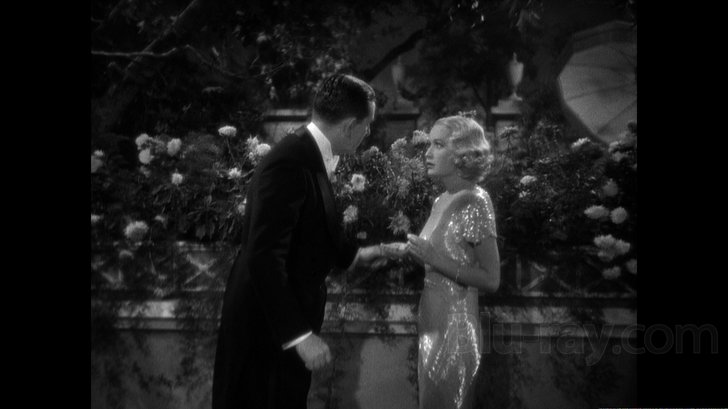
There is only one audio track on this Blu-ray disc: English LPCM 1.0. For the record, Criterion have provided optional English SDH subtitles for the main feature.
Generally speaking, the dialog is crisp, stable, and easy to follow. The few sequences where the music becomes prominent - such as the piano solo during Tom and George's preparations right before Gilda's visit - are also convincing. There is, however, some light background noise that occasionally pops up here and there. It is definitely not distracting, but its presence is certainly felt. For the record, there are no sync issues or audio dropouts to report in this review.
Design for Living Blu-ray Movie, Special Features and Extras 
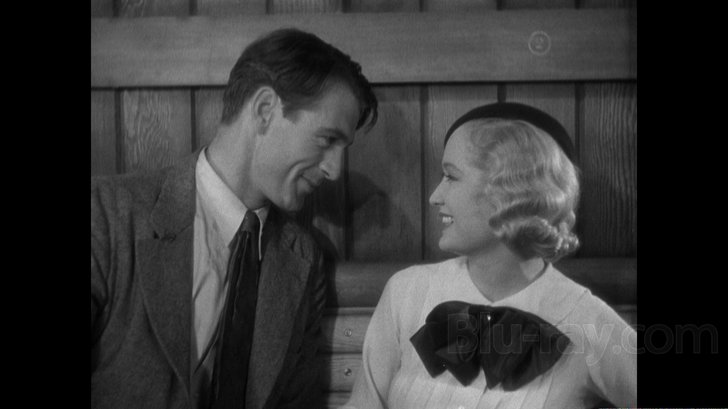
- "The Clerk" - a segment of the 1932 omnibus film If I Had a Million, starring Charles Laughton and directed by Ernst Lubitsch. In English, not subtitled. (3 min, 1080i).
- Selected-Scene Commentary - in this selected-scene commentary, film professor William Paul, author of Ernst Lubitsch's American Comedy, discusses the production history of the film and offers a visual analysis of the film, as well as the development of the director's style from Trouble in Paradise to Design for Living. In English, not subtitled. (36 min, 1080p).
- Joseph McBride: The Screenplay - in this new video interview, film scholar and screenwriter Joseph McBride discusses the structure of Design for Living, its differences and similarities with Noel Coward's play, Ben Hecht's script and legacy, etc. The interview was recorded exclusively for Criterion in 2011. In English, not subtitled. (23 min, 1080p).
- Play of the Week: A Choice of Coward - a 1964 British television production of the original Design for Living, introduced by Noel Coward. In English, not subtitled. (74 min, 1080i).
- Booklet - an illustrated booklet featuring an essay by film critic Kim Morgan.
Design for Living Blu-ray Movie, Overall Score and Recommendation 
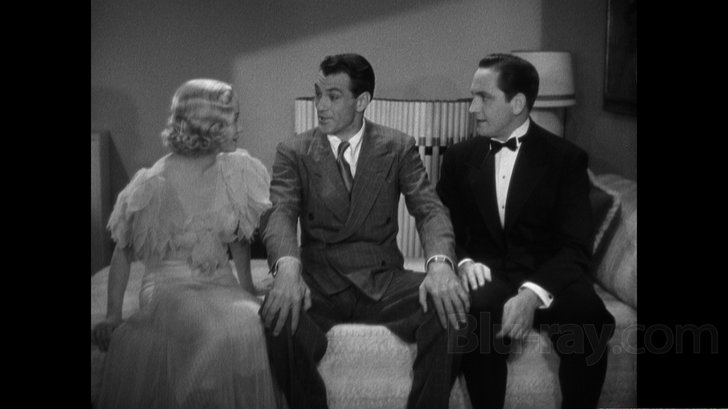
Ernst Lubitsch's Design for Living is a light, energetic and witty farcial comedy with an unusually bold for its time message. The film looks good in high-definition but it is obvious that time has not been too kind to it. Let's hope that eventually Lubitsch's arguably best film, Trouble in Paradise, will also be made available on Blu-ray. RECOMMENDED.
Similar titles
Similar titles you might also like

The Red Shoes 4K
1948

Love in the Afternoon
L'amour l'après-midi / Chloe in the Afternoon
1972

Brief Encounter
1945

Sunday Bloody Sunday
1971

The Rules of the Game 4K
La règle du jeu / 1959 Reconstructed Version
1939

Magnificent Obsession
included with "Magnificent Obsession" (1954) release
1935

Angel
1937

Blithe Spirit
1945

Morocco
1930

The Palm Beach Story
1942

Make Way for Tomorrow
1937

The Fortune
Limited Edition to 3000 - SOLD OUT
1975

Rich and Strange
East of Shanghai
1931

It Happened One Night
1934

To Rome with Love
2012

The Gold Rush
1925 and 1942 Versions
1925

Jules and Jim
Jules et Jim
1962

Weekend
2011

The Moderns
Collector's Edition
1988

The Life and Death of Colonel Blimp
1943
